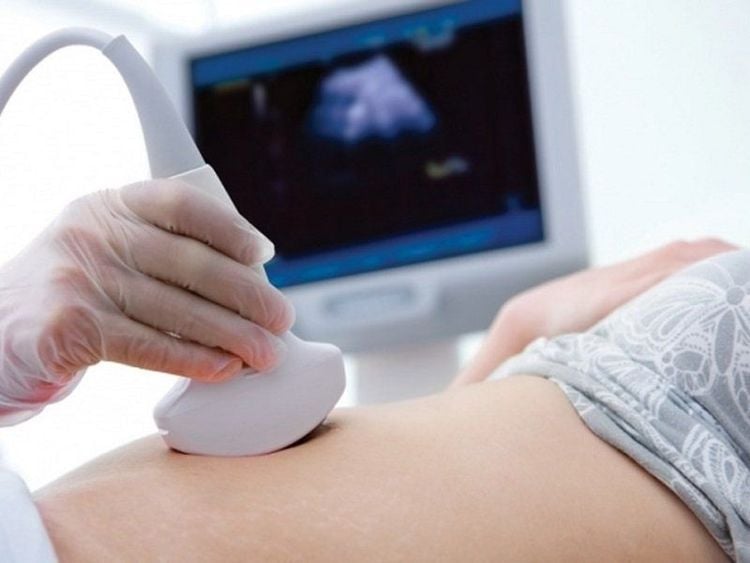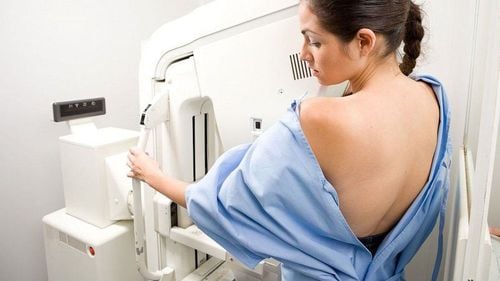This is an automatically translated article.
The article was professionally consulted by Specialist Doctor II Nguyen Thi Minh Tuyet - Head of Obstetrics and Gynecology Department, Vinmec Central Park International General Hospital.
Ultrasound is a fundamental technique used in the diagnosis of many women's health problems. Women often know many of the roles of ultrasound during pregnancy, but do not fully understand the importance of ultrasound in diagnosing other health problems.
1. What is an ultrasound?
Ultrasound is the energy that forms sound waves. During an ultrasound, a transducer transmits sound waves through the body. The sound waves come into contact with tissues, body fluids, and bones. The sound waves are then reflected back, like echoes. The transducer recognizes these sounds, converting them into images. These images are seen on the ultrasound machine screen.Ultrasound is used to monitor pregnancy. It is also used to diagnose and monitor other diseases not related to pregnancy.
2. Ultrasound in pregnancy test
Ultrasound allows the obstetrician-gynecologist to check the health and development, monitor the pregnancy and detect many birth defects of the fetus. Ultrasound is also used during chorionic villus sampling (CVS) and amniocentesis. There are three types of prenatal ultrasound exams: General ultrasound; Limited Ultrasound and Specialized Ultrasound.
Siêu âm thai định kỳ nhằm theo dõi thai kỳ
Position, movement, breathing and heart rate of the fetus Estimated size and weight of the fetus Amount of amniotic fluid in uterus Place of placenta Number of fetuses If the fetus is in a visible position, the sex can be determined. 2.2 Restricted Ultrasound A limited ultrasound is performed to answer a specific question. For example, if a woman is in labor, this type of ultrasound may be given to check the position of the fetus in the uterus. If a woman has vaginal bleeding, an ultrasound may be used to see if the fetal heart is still beating if the placenta is too low.
2.3 Expert Ultrasound A specialist ultrasound is done if an abnormality is suspected based on risk factors or other relevant tests. For example, if there are signs that the fetus is not growing well, the fetal growth rate can be monitored throughout the pregnancy with specialized ultrasound tests. Depending on the suspected problem, specialized techniques may be used, such as Doppler ultrasound and 3-D ultrasound.
3. Number of ultrasounds during pregnancy
You should have at least one general ultrasound during your pregnancy, usually done between 18-22 weeks of pregnancy. Some women may have an ultrasound scan during the first trimester of pregnancy. Ultrasound in the first trimester is not standard because it is too early to clearly see the fetal organs.Ultrasound is done early for the purpose of:
Estimating gestational age Helps to screen for certain genetic disorders Know the number of fetuses Check fetal heart rate Check for ectopic pregnancy
4. Ultrasound with health problems
Ultrasound shows pictures of the pelvic organs to find or diagnose health problems. Some ultrasounds may be used to:Evaluate a tumor in the pelvis (such as an ovarian cyst or uterine fibroids) Look for causes of pelvic pain Find the cause of abnormal uterine bleeding menstrual irregularities or problems Locate an IUD (IUD) Diagnose the cause of infertility Follow up treatment for infertility In addition, ultrasound may be used to evaluate scan results Mammography is used to identify suspicious findings, to aid in breast biopsy procedures, and to evaluate breast lumps.
5. How is the ultrasound procedure performed?
In a pelvic ultrasound, the transducer is moved across the abdomen (transabdominal ultrasound) or placed in the vagina (transvaginal ultrasound). The type of ultrasound given depends on the requirements of the obstetrician-gynecologist, which has been carefully considered during the examination.You will lie in bed with your belly exposed from the bottom of your ribs to your hips. Lubricating gel is coated on the surface of the abdomen. This increases the sensitivity of the probe to the skin surface. The handheld transducer is then moved along the abdomen to create an image. You will need to drink several glasses of water 2 hours before the test. This will fill your bladder, making it easier to see the structures below or around it.
6. What is required of the patient during the ultrasound?
The examiner will be asked to change into a hospital gown or undress from the waist down. Make sure your bladder is empty before the test. You will lie on your back with your legs in agitation, like for a pelvic exam. The probe is shaped like a wand covered with a rubbery sheath, like a condom, and is lubricated before being inserted into the vagina.
Người khám sẽ được yêu cầu thay áo choàng bệnh viện hoặc cởi quần áo từ thắt lưng trở xuống
7. The risks of performing ultrasound
Currently, there is no evidence that ultrasound is harmful to a developing fetus. No link has been found between ultrasound and birth defects, childhood cancer, or developmental problems later in life. However, it is possible that health problems may be identified in the future. For this reason, ultrasound tests are performed only when ordered by a qualified physician. Abuse of ultrasound should be avoided during pregnancy.Maternity packages at Vinmec International General Hospital all have 2D, 3D and 4D ultrasound, helping to detect abnormal problems during pregnancy, protecting the health of mother and baby. Depending on the stage of pregnancy, pregnant women will be consulted by the doctor for appropriate fetal ultrasound to check the development status of the baby.
Maternity packages at Vinmec International General Hospital include:
Maternity care program 2019 – Labor Maternity care program 2019 – 36 weeks Maternity care program 2019 – 27 weeks Maternity care program 2019 – 12 weeks For all information about maternity and childbirth services at Vinmec Hospital, you can contact a consultant HERE
SEE MORE
What is an ultrasound? Things to know about ultrasound Abdominal ultrasound is an ultrasound of which parts? Fetal ultrasound: Difference between 2D, 3D and 4D ultrasound














